Collapsed Mexico school raises questions about quake codes
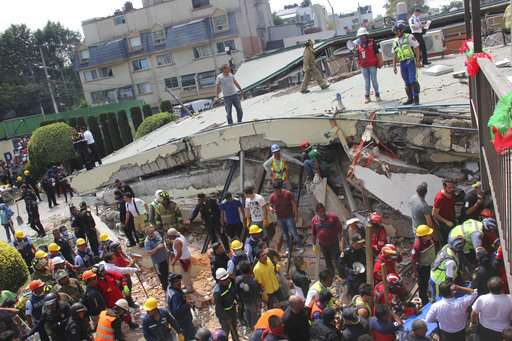
On paper at least, the Mexico City school appeared to be structurally sound and built to withstand a major earthquake. But it collapsed, killing 26 people, most of them children. And now authorities are looking into whether an apartment reportedly built on top of the two-story school was to blame.
Claudia Sheinbaum, the borough president of the southern Mexico City district where the school went down in the 7.1 magnitude quake, told a news conference Tuesday that the school appeared to have its paperwork in order, at least according to documents filed by architects and engineers who supposedly inspected the structure. She said an investigation was being launched to look for any abnormalities not revealed in those documents.
"We can't stop just with the paperwork," Sheinbaum said. "We are going to do a review of the building itself."
Authorities said that the owner of the privately owned Enrique Rebsamen school built an apartment for herself on top of the collapsed wing, which local media said included a Jacuzzi, and were looking into whether the extra weight may have played a role in the collapse.
Sheinbaum said she didn't know if that was true, but said the owner, Mónica García Villegas, had a permit dating back to 1983 to build a school and apartments on the lot, though it was unclear whether she had permission to add a third story to the section of the school that collapsed.
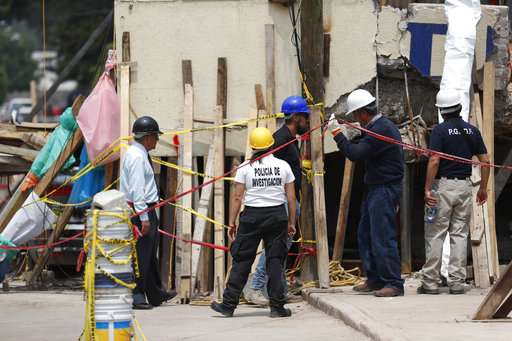
The school was just one of dozens of buildings that collapsed in the Sept. 19 quake that killed at least 333 people, 194 of them in Mexico City. Questions have been raised about whether new building standards put in place after a 1985 quake that killed 9,500 people had been adequately followed.
Although construction began on the school in 1983—two years before the new codes went into effect—it was expanded over the next 34 years with no evidence of noncompliance, Sheinbaum said. She said the only immediately evident paper work problems during that time were two cases of unregistered expansion work, and Garcia Villegas paid a fine for not registering the work and was allowed to proceed.
On Tuesday, Meyer Klip Gervita, head of the Institute of Administrative Verification, said that earlier this year authorities had asked the school to stop operating because no record of its zoning permit could be found. But the school appealed and remained open while the case made its way through court. The apparent violation was not enough to force the school's closure. The institute was created to ensure compliance with city building ordinances among other responsibilities.
Phone calls to a number registered to Garcia Villegas, who was pulled alive from the rubble, rang unanswered.
Seismologists and engineers say the Mexico City buildings most at risk in a quake are those, like the school building, that were built atop an Aztec-era lake bed, where the muddy soil can amplify earthquake waves.
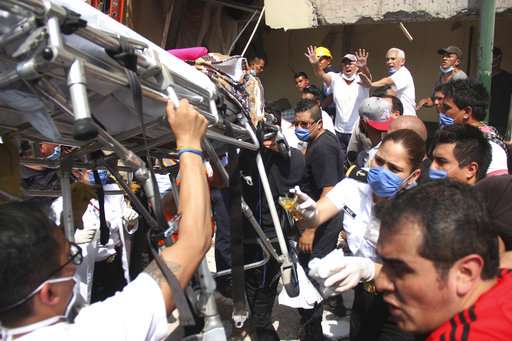
But, although an architect signed a document certifying the school was structurally sound, experts questioned the method used to evaluate it, which Sheinbaum said involved piling sandbags on its upper floors to simulate 85 percent of the structure's maximum design-carrying weight, and then measuring the resulting floor sag.
Kit Miyamoto, a structural engineer and California Seismic Safety Commissioner, said sandbags can't test for earthquake resistance.
"Seismic is a lateral force, so if you just put a whole bunch of sandbags it is not going to tell you the story of the seismic capacity of the building at all," Miyamoto said. "You can do testing, to determine what kind of reinforcement" a building has, including ground-penetrating radar or exposing rebar.
The school's first wing was built in 1983, but other additions and floors were added over the years, said Francisco Garcia Alvarez, president of the Mexican Society of Structural Engineers, who evaluated the school site after its collapse.
A third floor appeared to have been added recently to the original 1983 structure that was toppled in the quake, raising questions about what construction permits, if any, the school had obtained, how recently it had been inspected and what architectural plans were submitted in the first place. Paper work filed as recently as June by a private architect working for the school asserted that the parcel had not been modified in a way that would violate the permitted land use.

The quake, whose epicenter was only about 100 miles from the capital, hit the city's south side where the school is located with a force much stronger than the original school structure was built to withstand in the early 1980s, Garcia Alvarez said.
That caused a failure in the building's joints where the columns met the beams, he said, noting that the addition of a third floor would have added more weight to the structure. Still, he said, its possible role in the collapse needed further study.
Sheinbaum, who is widely expected to run for mayor, faces heightened political scrutiny over the school's collapse, which killed 19 children and seven adults, leaving behind a pile of wreckage still visible in a cordoned-off street of the leafy neighborhood manned by soldiers.
"We all just keep working, but then all of a sudden it hits you," said Alfonso Martinez, one of hundreds of volunteers who have been ferrying shovels, hard hats, food and water to rescue workers since the earthquake struck last week. "People are going in and out of grief about all the lives that were lost."
Neighbors said that the school had grown quickly over the years and they had noted new construction. "We saw there was a third floor put on there but we didn't suspect someone was living there," said Juan Antonio Gudino. "I just thought it was an office."
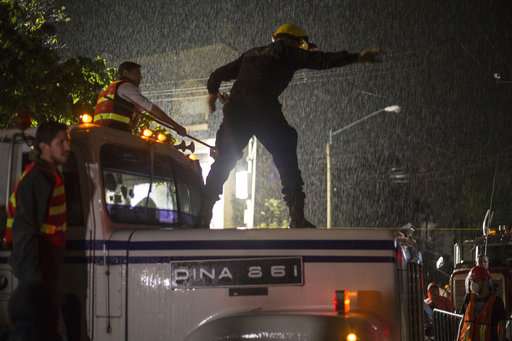
Across Mexico City, some 40 buildings collapsed in the earthquake and some 500 others were so severely damaged they will either have to be demolished or receive major structural reinforcement, according to Mexico City Mayor Miguel Angel Mancera. Another 1,300 are reparable, and about 10,000 buildings inspected so far were found to be habitable.
Still, experts stressed that reforms to building codes following the 1985 earthquake had lowered the number of casualties. But, they said, more needed to be done to ensure compliance.
"From what we can tell the new codes worked well, and helped avoid more harm," said Eduardo Miranda, a professor in Stanford University's civil and structural engineering department, who evaluated buildings following the quake. "But some of these buildings may have failed because people did not follow the codes."
Unlike in the United States, where city engineers typically check architectural drawings for structural integrity, authorities in Mexico City perform an administrative check of submitted plans, but don't vet structural calculations, he said.
Two blocks from the school, bouquets of white chrysanthemums line a makeshift memorial with the names of those pulled from the wreckage—a reminder of the tragedy that befell the school.
"We were all focused on following the code," Sheinbaum said. "We are all asking ourselves if we could have done more."
-
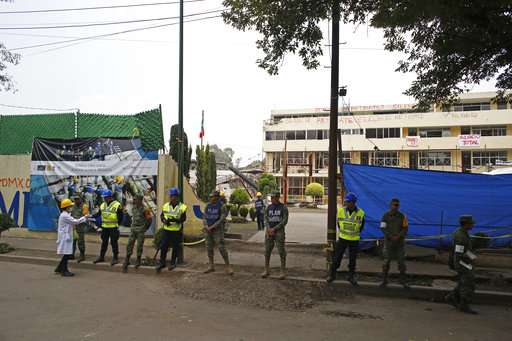
A city worker gives hand sanitizer to the Mexican navy sailors guarding the main entrance the Enrique Rebsamen school that collapsed during last week's 7.1 magnitude quake in Mexico City, Tuesday, Sept. 26, 2017. The school's collapse, which claimed the lives of 26 people, apparently had its paperwork in order, at least according to documents filed by architects and engineers who supposedly inspected the structure. (AP Photo/Dario Lopez-Mills) -
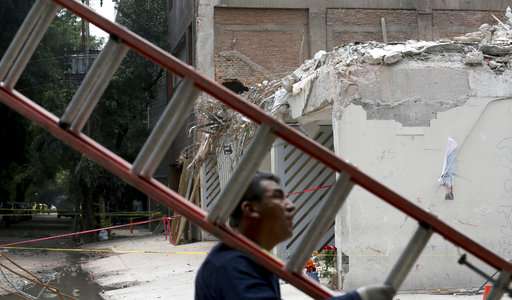
A man carries a ladder in front of a collapsed building as the earthquake continues in Mexico City, Tuesday, Sept. 26, 2017. Search teams are still digging through dangerous piles of rubble at sites around the city, hoping against the odds to find survivors after the Sept. 19 quake. (AP Photo/Gustavo Martinez Contreras) -
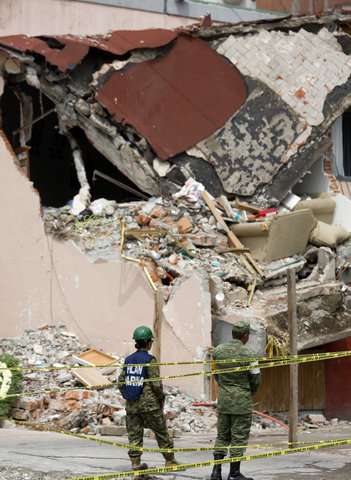
Soldiers stand guard by a collapsed building after last week's 7.1 magnitude earthquake, at the corner of Division del Norte and Peten streets in the Santa Cruz Atoyac neighborhood of Mexico City, Tuesday, Sept. 26, 2017. Authorities pledged a return to normality, but many streets in the capital were still blocked by construction equipment and recovery teams looking to extract the last remaining bodies from the rubble. (AP Photo/Moises Castillo) -
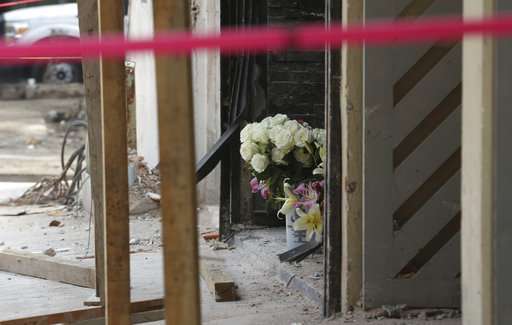
Flowers sit at the entrance of a business damaged after last week's 7.1 earthquake in Mexico City, Tuesday, Sept. 26, 2017. Search teams are still digging through dangerous piles of rubble at sites around the city, hoping against the odds to find survivors after the Sept. 19 quake. (AP Photo/Gustavo Martinez Contreras) -
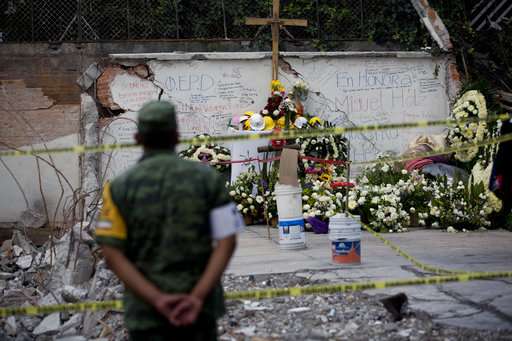
A solider looks at a memorial set up by people at the site of a building that collapsed in last week's 7.1 magnitude earthquake, at the corner of Division del Norte and Peten streets in the Santa Cruz Atoyac neighborhood of Mexico City, Tuesday, Sept. 26, 2017. Authorities pledged a return to normality, but many streets in the capital were still blocked by construction equipment and recovery teams looking to extract the last remaining bodies from the rubble. (AP Photo/Moises Castillo)
© 2017 The Associated Press. All rights reserved.



















